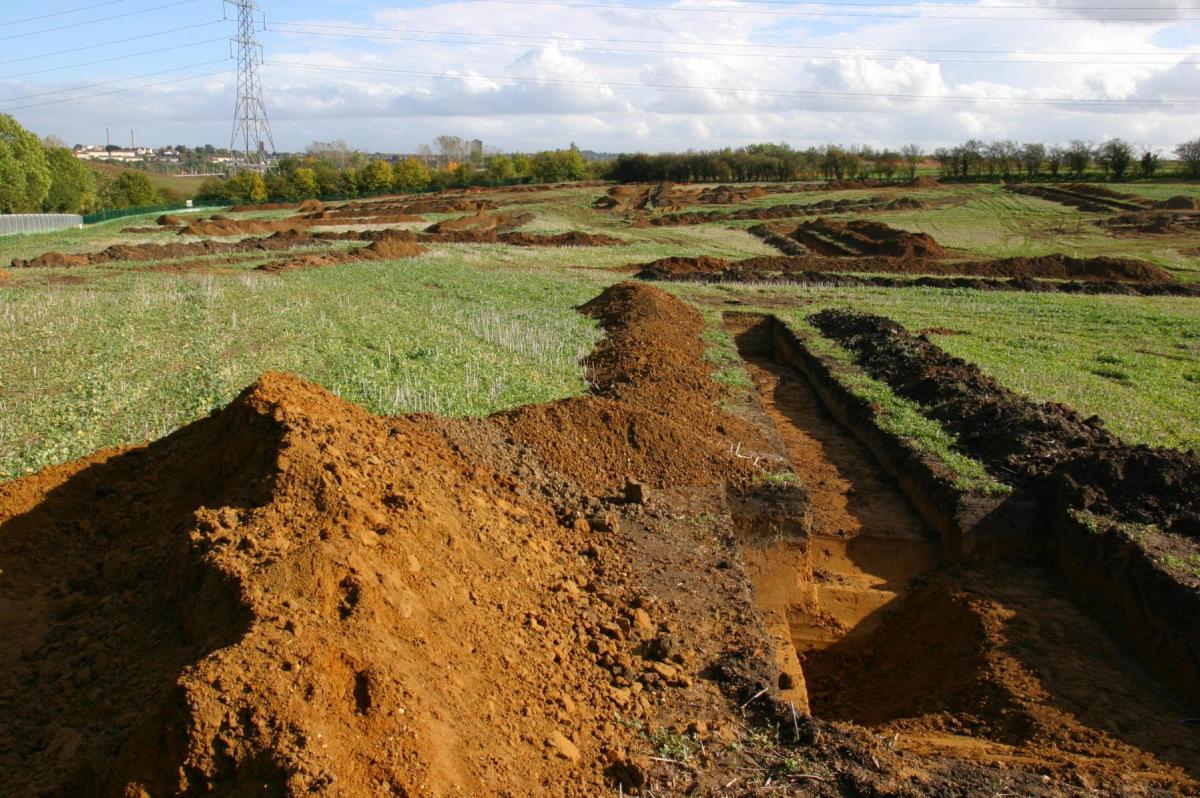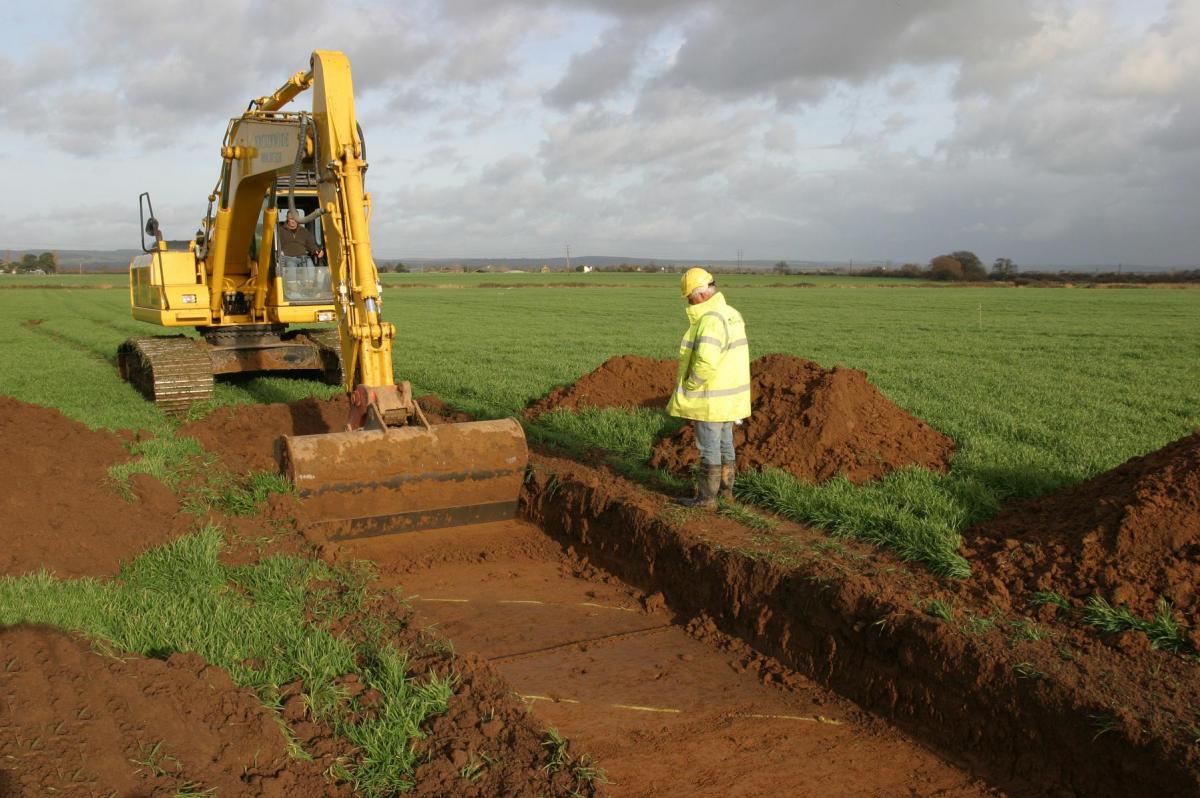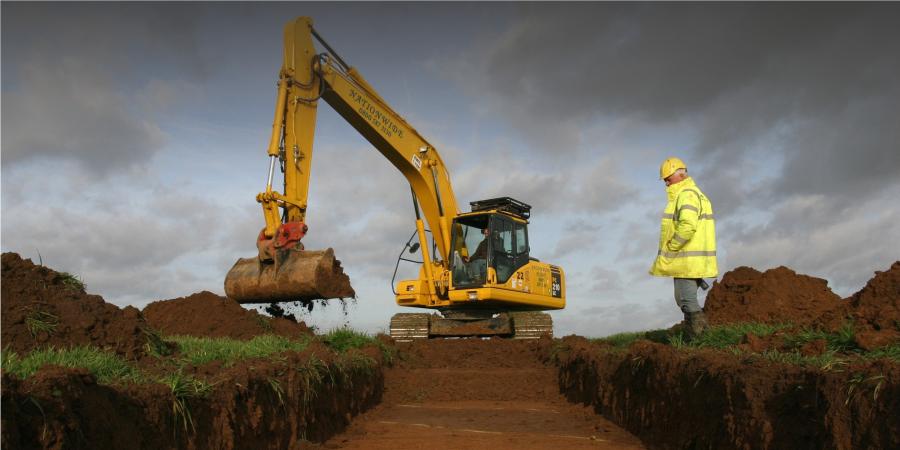Planning authorities often require evaluation trial trenching to help them decide whether to order more detailed archaeological work before a development is approved. Wessex Archaeology have the expertise to carry it out efficiently, with regard to any archaeological remains discovered.
Trench dimensions
Trial trench evaluation is a rapid means of investigating a sample of a site, usually between 2% and 5% of the site surface area. Trenches are generally between 25 m and 50 m in length, and up to 1.8 m wide. This can vary, however, according to the layout of proposed development, existing information (e.g. geophysical survey) and perceived archaeological potential. We usually dig trenches using tracked or wheeled mechanical excavators, although on rare occasions they are dug by hand.


Choosing trench locations
We will advise on the best location for the trenches, based on:
- consultation with the County Archaeologist;
- previous investigations such as aerial photography, geophysical survey or desk-based assessments;
- targeting known features in the landscape;
- as an array across the site.
Close supervision
Experienced field archaeologists will closely supervise the work, and any archaeological features discovered will be surveyed, cleaned, hand excavated and recorded.
Enough remains are excavated to determine their type (e.g. ditches or burials) and date, but evaluation trenches are not mini-excavations and as much archaeology as possible must be left undisturbed. This is so that a full research-led excavation strategy can be carried out if further mitigation is required (e.g. strip, map and sample or excavation).
Team


